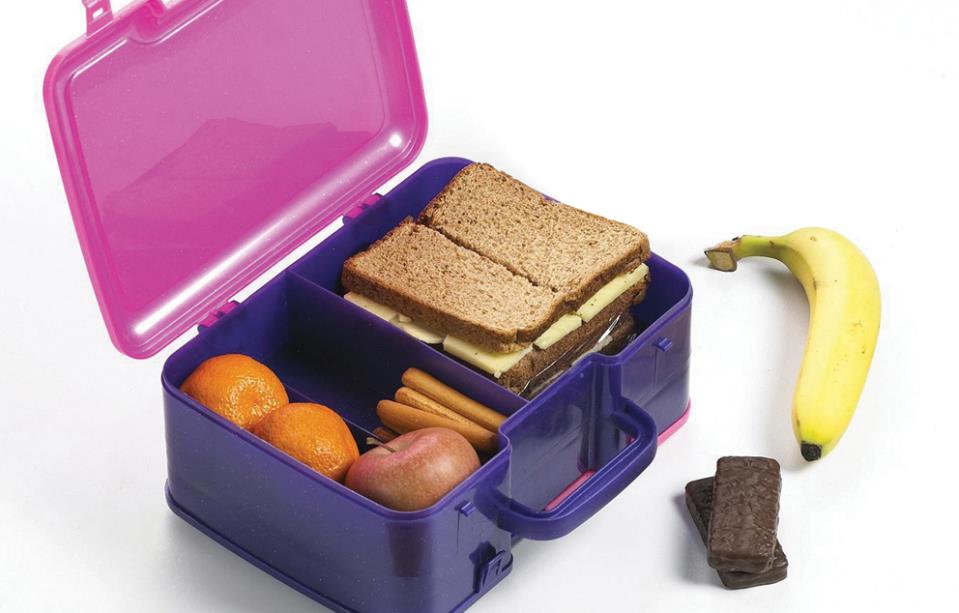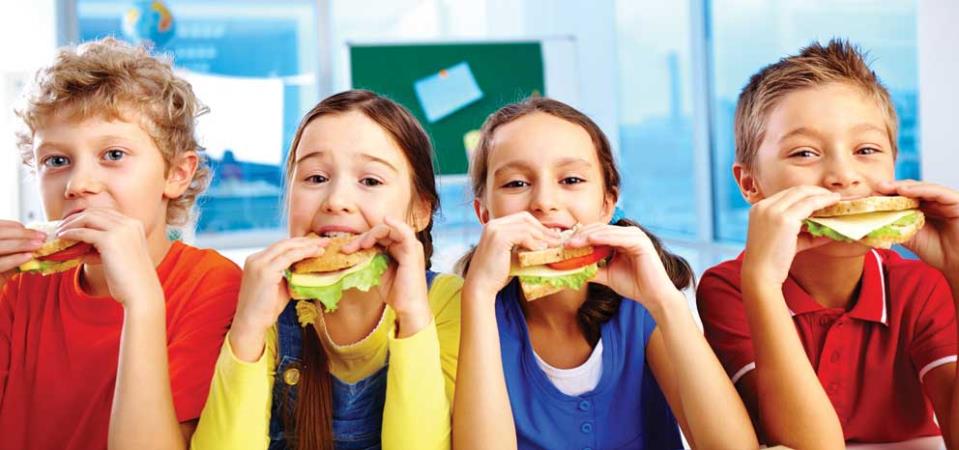Children's school lunch is a tug-of-war between proper nutrition and peer pressure. Parents sometimes struggle to get their children's school lunch right. Fussy eaters may not be getting the nutrition they need. Children may complain that their healthy meals are not like their friends'.
It helps when schools have a healthy food policy, as it encourages parents to pack lunch boxes with nutritious food and snacks such as fruit and yogurt, while excluding sweets, crisps and other similar snacks.
Beatrix Strauss Nilsson says she packs 'leftovers' from the previous dinner, e.g. pasta, rice with chicken chunks, fish fingers and fresh potato mash. Alternatively she prepares something in the morning such as sandwiches with egg or cream cheese and ham.
She includes wholesome snacks so her young daughter always has a variety of things to choose » from like cheese chunks, ham rolls, raw vegetable sticks (cucumber, carrot), fruit slices (apple, pear, plums, peaches, watermelon, melon), whole banana, and yogurt.

This was possible while her daughter attended pre-school. Now that the girl has moved on to regular school, Beatrix increased the sandwiches and introduced wraps with different fillings as the school does not allow lunch boxes to include food that requires heating.
Debbie Tully says school lunches are always a dilemma for her. Every year starts well, as her 10-year old son takes home-made packed lunches to school. As the weeks wear on, however, buying food at the school canteen becomes more attractive to him, which Debbie is not pleased about. She believes that not all schools have a healthy food policy and insists that school canteens should be selling more fresh and unprocessed food, rather than things like chicken nuggets, pies and so on.
Everyone adopts their own method for school lunch preparation, one that works specifically for their own family. Some prepare food the night before, while others prefer to wake up earlier and prepare the lunches on the day. Hanadi Perez says that, despite her five-year-old son's school saying they do not accept lunches that need heating, she still insisted with them that he should eat a proper meal during the day. To ensure this is possible, she told the head of school she will donate a microwave oven to the school so the food can be heated.

Hanadi also sends her daughter to pre-school with a main meal made of fish and vegetables, chicken and rice, or something she would have prepared for supper the night before. She says that when her son first started school he was not happy about eating a main meal at school when his friends were all eating sandwiches. This didn't stop her, however. Rather than change her son's lunch box contents, she helped him understand that he needs to eat certain foods. So his lunch box always includes a main meal, a piece of fruit, juice, water, some cheese and yogurt.
A word from the nutritionist
When preparing school lunches, Dr Antonella Grima advises including as many fresh ingredients as possible, and no pre-packed or ready-made lunches and snacks, if possible. "These tend to have a higher salt, fat and sugar content," she says. "Reducing the salt content of lunches is also beneficial and one may look for low-salt bread, spreads, ham or cheese."
"Include lots of water," she adds, "especially on active or sports days. Needless to say, sweets and junk food should be kept away from the lunch box, especially since most schools have strict policies regarding such foods."
Asked about fussy eaters, Dr Grima says one should involve children in the preparation of their lunches and include food choices that they like: "Let them experiment with different ways of preparing and presenting lunch. This may be by adding new ingredients, such as herbs, to enhance flavour, or by including new food, such as pasta or rice instead of the classic sandwich. They're more likely to eat their lunch if it looks and smells appealing."
Unless your child's doctor is concerned about his or her growth, Dr Grima says you should not worry too much if the child returns home from school with most of the lunch uneaten. "Children tend to auto-regulate much better than us adults, and eat more on days or at times when they really need it and less when they perceive less hunger," she says.
Compartmentalised lunch boxes are very helpful so that one can use the different sections to include a variety of food groups, such as bread or pasta, vegetables and fruit, a protein source, such as beans or chicken strips, and dairy, such as a soft cheese, rather than offering only the carbohydrate-rich options, such as sandwiches.
"By offering a variety of food choices on different days of the week, you introduce an element of surprise and make lunchtime less boring," Dr Grima says. "In addition, you would be making sure that your child is receiving a healthy variety of nutrients."
Dr Antonella Grima is a nutritionist, medical doctor and public health specialist

Follow A&H magzine